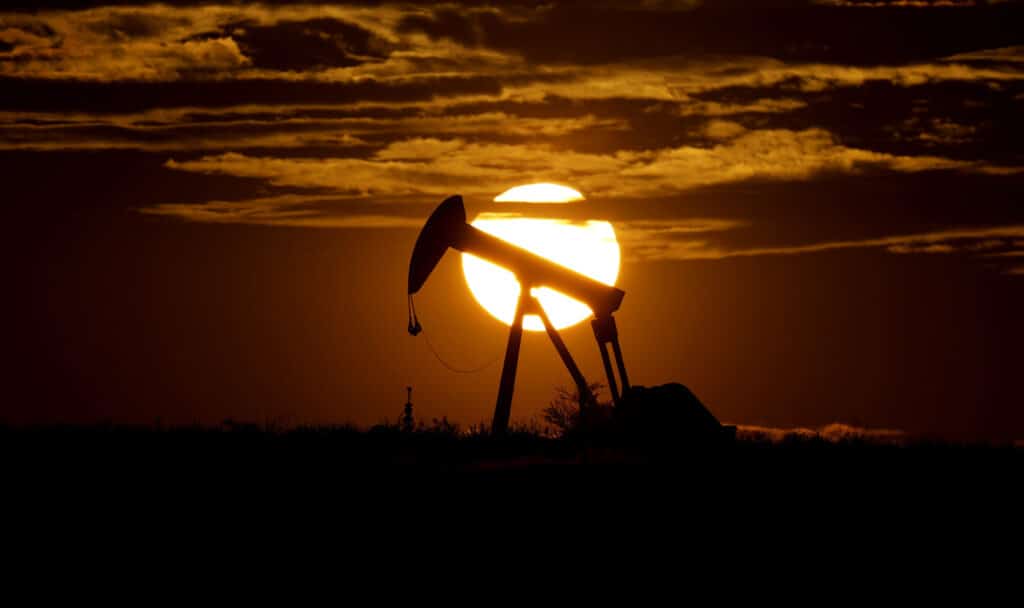Russian invasion, Chinese lockdowns have had a profound effect on the oil market, The result has been fluctuating and high oil prices, squeezing consumers in the U.S. and Europe with climbing inflation and the rising costs of driving and heating homes, and again the Biden administration is incapable or uncaring of what is happening to average people. Analysts expect the 23-country alliance known as OPEC+ to stick with a set schedule of modest increases in production, amounting to 432,000 additional barrels of oil per day in June. As reported by the AP:
Oil prices have risen as the boost in production remains smaller than what countries like the U.S. are pressing for to ease high prices at the pump
LONDON (AP) — OPEC and allied oil-producing countries, including Russia, are weighing conflicting forces Thursday as they decide how much crude should flow to volatile global markets. Europe’s proposal to phase out Russian oil and other Western sanctions are choking back supply, while COVID-19 shutdowns in China are cutting demand.

The result has been fluctuating and high oil prices, squeezing consumers in the U.S. and Europe with climbing inflation and the rising costs of driving and heating homes. That eats away people’s ability to spend elsewhere, including at shops still rebounding from the pandemic.
Analysts expect the 23-country alliance known as OPEC+ to stick with a set schedule of modest increases in production, amounting to 432,000 additional barrels of oil per day in June. The gradual increases are aimed at making up deep production cuts made during the depths of the pandemic recession in 2020.
Oil prices have risen as the boost in production remains smaller than what countries like the U.S. are pressing for to ease high prices at the pump. Some OPEC+ members also haven’t been able to reach their allotted quotas. Two members — Saudi Arabia and the United Arab Emirates — have almost all the group’s spare capacity.
Increasing production beyond the quotas would complicate relations among members, and OPEC has made it clear to European officials that the oil cartel is not going to increase production to compensate for lost Russian oil.
The war in Ukraine has been a driving force in oil markets in recent days, and more so after the European Union’s executive commission on Wednesday proposed phasing out Russian crude oil imports within six months.
Fears of a cutoff of Russian oil, natural gas or both have helped keep energy prices high. Russia is the world’s largest oil exporter, with some 12% of global supply, and Europe is its biggest customer.
Beyond the EU oil boycott, Western financial sanctions have deterred banks and insurers from supporting the oil trade with Russia. Some buyers have shunned Russian oil because they don’t want to be associated with the Kremlin.
The International Energy Agency has said some 3 million barrels a day of Russian oil could wind up being forced off the market starting this month “due to international sanctions and as the impact of a widening customer-driven embargo comes into full force.”
The Paris-based organization said that “while some buyers, most notably in Asia, increased purchases of sharply discounted Russian barrels, traditional customers are cutting back.”
Meanwhile, COVID-19 restrictions are weighing on fuel use in China and undermining oil demand. The government discouraged people from traveling over the May Day holiday, while in Beijing major tourist sites such as the Forbidden City and the Beijing Zoo have closed their indoor exhibition halls and are operating at partial capacity.
Also helping hold back bigger surges in oil prices is the release of oil from strategic reserves by the U.S. and other International Energy Agency member countries.
But “higher prices could be around the corner,” said Bjornar Tonhaugen, head of oil markets research at Rystad Energy. “The oil market has not fully priced in the potential of an EU oil embargo, so higher crude prices are to be expected in the summer months if it’s voted into law.”
U.S. oil prices were little changed Thursday, up 0.1% ahead of the meeting to $107.90 per barrel, which is more than 40% higher since the start of the year. International benchmark Brent crude rose 0.4%, to $110.51 per barrel.
For U.S. consumers, average gasoline prices stood at $4.19 per gallon Wednesday, up $1.29 from a year ago. The price of crude oil accounts for about 60% of the price at the pump in the United States.
Diesel for trucks and farm equipment has risen even more, by $2.34, to $5.43 per gallon.
Drivers in Europe, where taxes make up a larger proportion of the price at the pump, are paying more, too. Gasoline prices are averaging 1.95 euros per liter in Germany, or the equivalent of $7.77 per gallon, while diesel has been at 2.02 euros per liter, or $8.05 per gallon.
Source AP






